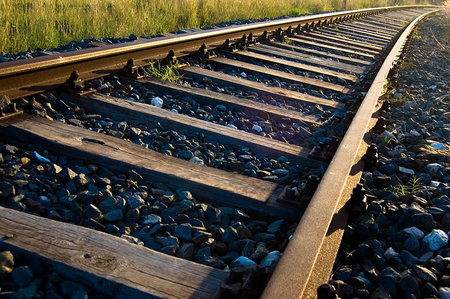Fewer Passenger, Freight Rail Delays Attributed to Drilling Decline

BISMARCK, N.D. (AP) — Delays in Amtrak service and agricultural product shipping have eased across the Upper Midwest in part because weak oil prices have prompted a drilling slowdown in North Dakota, officials said.
Along with recent track upgrades, a recently completed pipeline and a new North Dakota refinery also has resulted in fewer oil-laden trains, freeing up rail space and lessening the potential for another disastrous derailment, like the 2013 explosion in Quebec that killed 47 people, involving crude from western North Dakota’s oil patch.
Displacing oil train shipments has been a goal of the industry for years, according to Ron Ness, president of the North Dakota Petroleum Council.
“Producers want to get those barrels on pipelines,” said Ness, whose Bismarck-based industry group represents more than 500 companies working in North Dakota. “Oil wants to move to the pipelines. Getting it off the rails opens the rails for other commodities, as well.”
Producers began shipping North Dakota oil on trains in 2008, when the state reached its then-capacity for pipeline shipments. But that surge of traffic from North Dakota to the East, West and Gulf coasts plus oil-related inbound freight shipments were blamed for long passenger rail delays across the northern tier of the U.S. and a backlog of agriculture shipments across several farming states.
Rail accounts for about half of North Dakota crude oil shipments, down from a high of 75% two years ago, said Justin Kringstad, director of the North Dakota Pipeline Authority. Several mile-long trains still leave western North Dakota each week, each pulling more than 100 cars with about 3 million gallons.
Kringstad said two things have helped displace oil traffic in recent months: A new 84,000 bpd pipeline that went into service in February and a more than $425 million refinery in western North Dakota that late last month began converting about 20,000 barrels of crude daily into diesel and other products, most of which remains in the state. Combined, those displace roughly 1½ oil trains daily, or about 45 a month.
Though the state produced 1.2 MMbbls of crude per day in May, down slightly from the record set in December, the breakneck pace that elevated it to No. 2 behind Texas has decelerated with slumping oil prices slowing rig activity and lessening the need for freight shipments to support drilling. State data showed 73 rigs drilling on Tuesday, down from 193 on the same day a year ago.
Shippers also credit better rail conditions to ongoing track upgrades done by BNSF Railway Co., which moves the bulk of North Dakota’s oil and most of the freight in the Upper Great Plains.
The availability of train cars for agriculture shipments has improved largely with the slowdown in oil freight traffic, North Dakota Farmers Union President Mark Watne said, and the ease in congestion has had a domino effect in other farm states.
“I would not suggest it’s perfect but it’s substantially better than it’s been,” he said.
Last summer, Amtrak said increased oil train traffic had caused long delays along its Chicago-to-Pacific Northwest Empire Builder route. The on-time performance percentage along the route had dropped to “the single digits” but has improved to as high as 60 percent this year, said Marc Magliari, a Chicago-based spokesman for the federally funded rail corporation.
“It’s not where it needs to be but it’s a whole lot better than a year ago at this time,” he said.
Related News
Related News

- Keystone Oil Pipeline Resumes Operations After Temporary Shutdown
- Biden Administration Buys Oil for Emergency Reserve Above Target Price
- Freeport LNG Plant Runs Near Zero Consumption for Fifth Day
- Enbridge to Invest $500 Million in Pipeline Assets, Including Expansion of 850-Mile Gray Oak Pipeline
- Williams Delays Louisiana Pipeline Project Amid Dispute with Competitor Energy Transfer
- Evacuation Technologies to Reduce Methane Releases During Pigging
- Editor’s Notebook: Nord Stream’s $20 Billion Question
- Enbridge Receives Approval to Begin Service on Louisiana Venice Gas Pipeline Project
- Russian LNG Unfazed By U.S. Sanctions
- Biden Administration Buys Oil for Emergency Reserve Above Target Price




Comments